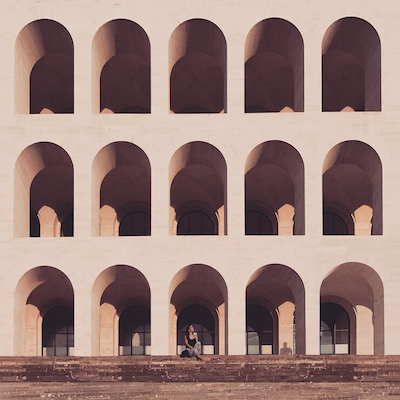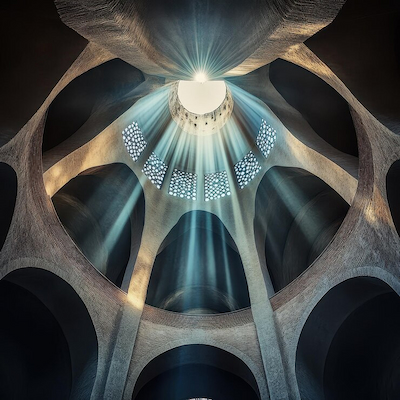
Islamic architecture is a fascinating field renowned for its rich fusion of art, geometry, and spirituality. From majestic mosques to ornately decorated palaces, Islamic architecture reflects a profound connection between physical space and the divine. This architectural style goes beyond aesthetics, serving as a cultural and religious expression developed over centuries across the Muslim world.
The significance of Islamic architecture extends beyond visual beauty. It incorporates geometric principles and symmetry that evoke feelings of order and harmony. Spirituality is a foundational element, with each component intentionally designed to express the greatness of God and the pursuit of perfection. In this article, we will explore how the principles of Islamic architecture work, the benefits of understanding them, and how to fully appreciate this art form.
How the Principles of Islamic Architecture Work
The principles of Islamic architecture are rooted in concepts that intertwine to create structures that are both functional and spiritual. One of the most striking aspects is the use of geometric shapes, often seen as representations of divine order. Geometry is employed to create intricate patterns that adorn surfaces, reflecting the Islamic belief in the unity of God. These geometric patterns are thoughtfully crafted and repeated at various scales, creating a mesmerizing and contemplative visual effect.
Symmetry is another fundamental principle. It not only beautifies the structures but symbolizes harmony and balance central to Islamic philosophy. Mosques, for example, are often designed with a central axis that divides the space into two equal halves, reinforcing the idea that the sacred and the secular coexist in equilibrium. This symmetry invites meditation and reflection, enabling worshippers to connect more deeply with their spirituality.
Light also plays a vital role. Windows and openings are designed to allow natural light to enter, creating a welcoming, spiritual atmosphere. Light is viewed as a metaphor for the divine presence, and the way it filters into mosques and palaces has been carefully considered. This interplay of light and space enhances the architecture aesthetically and elevates the user’s experience.
Finally, ornamentation is essential in Islamic architecture. Walls are often decorated with calligraphy, tiles, and other decorative elements that convey spiritual and cultural messages. Arabic calligraphy, for example, expresses the beauty of the written word and the depth of Islamic teachings. These adornments are more than just decorations; they tell stories and connect viewers to the rich cultural heritage of Islam.

Benefits of Understanding Islamic Architecture: Art, Geometry, and Spirituality
Understanding Islamic architecture offers benefits beyond aesthetic appreciation. First, it provides insight into historical cultural interactions. Islamic architecture serves as a testament to the exchange of ideas and influences between civilizations, reflecting the rich tapestry of human history. Exploring these interconnections gives scholars and enthusiasts a deeper understanding of the societies that created these masterpieces.
Islamic architecture also exemplifies how art can express spirituality. Grasping the principles behind this art reveals the importance of spirituality in everyday Muslim life. Islamic buildings are not only functional spaces—they are places of worship, reflection, and community. This connection between space and spirituality is a valuable lesson that fosters respect for cultural and religious diversity.
Another advantage lies in exploring mathematics and geometry in a visual and accessible way. The complexity of geometric patterns and structural symmetry presents a rich field for mathematical inquiry. This can inspire new teaching methods in subjects like mathematics and art, demonstrating how these fields can intersect in innovative, creative ways.
Lastly, appreciating Islamic architecture enriches travel and tourism experiences. Many travelers seek not just to see these buildings but to understand their meaning. Knowing the history, principles, and spirituality behind Islamic architecture can turn a visit to a mosque or palace into a profoundly meaningful experience. This enriches the visitor’s experience and promotes respect and understanding across cultures.
How to Appreciate Islamic Architecture: Art, Geometry, and Spirituality in Form
-
Explore Islamic forms and their meanings: Each curve, arch, and dome has a specific significance connected to spirituality and Islamic culture. By examining these forms, one can uncover the depth of Islamic thought.
-
Observe ornamental details: These elements beautify and tell stories, transmitting spiritual messages. Pay attention to the complexity and beauty of decorative patterns in mosques and palaces.
-
Understand the role of sacred geometry: Geometric patterns symbolize divine order and universal harmony. Studying them provides insight into the relationship between mathematics and art.
-
Visit historic mosques for direct experience: Nothing replaces firsthand experience. Visiting historic structures enables you to feel their grandeur and spirituality.
-
Study Muslim design influences: Islamic design draws upon multiple cultures throughout history. Exploring these influences helps understand how Islamic architecture evolved.
-
Analyze geometric proportions: Structural proportions are essential. Studying how they are applied can reveal an architect’s intention and the harmony between form and function.
Appreciating Islamic architecture involves observation and reflection. Every element, from form to ornamentation, carries deep meaning that enriches the viewer’s experience. Delving into this fascinating world connects you with both art and spirituality.

Did You Enjoy Exploring Islamic Architecture: Art, Geometry, and Spirituality in Form?
Islamic architecture is an extraordinary expression of human creativity, combining art, mathematics, and spirituality in a singular and profoundly meaningful way. It stands as a testament to centuries of cultural exchange, philosophical inquiry, and devotion, weaving together elements from diverse regions—from the intricate tilework of Persian mosques to the monumental structures of Ottoman and Moorish heritage. This architectural tradition not only represents physical mastery over space and form, but also serves as a symbolic bridge between the earthly and the divine.
Every element found within Islamic architecture, whether it be the geometric patterns, ornate calligraphy, or the strategic use of light, carries intentional meaning. These features are not merely decorative—they reflect deep spiritual principles, representing unity, infinity, and the presence of the sacred in the everyday. Through the repetition of patterns and the harmonious proportions of structure, Islamic buildings evoke a sense of balance and contemplation that encourages inner reflection. Architecture becomes an act of devotion, and space becomes a canvas for expressing the infinite beauty of creation.
Appreciating Islamic architecture requires both visual sensitivity and intellectual curiosity. It invites us to look closer, to see the messages encoded in form and structure, and to understand how these works of art mirror the values and cosmology of the cultures that produced them. The architecture is deeply intertwined with the rhythms of life, often oriented toward spiritual practice, community gathering, and environmental adaptation—demonstrating an elegant balance between function and symbolism.
We hope this article sparked your interest in Islamic architecture and its intricate, multilayered beauty. Whether through visits to iconic sites like the Alhambra, the Blue Mosque, or the Great Mosque of Córdoba, or by engaging with scholarly texts and cultural exhibitions, there are countless ways to deepen your understanding. The journey into Islamic architecture is not only a study of buildings—it is an invitation to explore the depths of artistic ingenuity, historical depth, and spiritual aspiration that continue to inspire across generations and continents.
Frequently Asked Questions
What is Islamic architecture?
Islamic architecture is a distinctive style that combines art, geometry, and spirituality. Its structures include mosques, palaces, and gardens.
What are the main elements of Islamic architecture?
Key elements include arches, domes, and minarets, which create beauty and harmony. Geometric patterns and calligraphy are also prominent.
How does Islamic architecture relate to spirituality?
Each structure reflects faith—orientation toward Mecca is crucial. Spaces are designed to foster a sense of connection with God.
Why is geometry important in Islamic architecture?
Geometry forms the basis of design. It symbolizes universal order and aims to inspire peace and contemplation in viewers.
Where can we find examples of Islamic architecture?
You can find examples worldwide. Notable sites include the Alhambra in Spain and the Sheikh Zayed Mosque in the United Arab Emirates. Each showcases how art, geometry, and spirituality merge into form.

